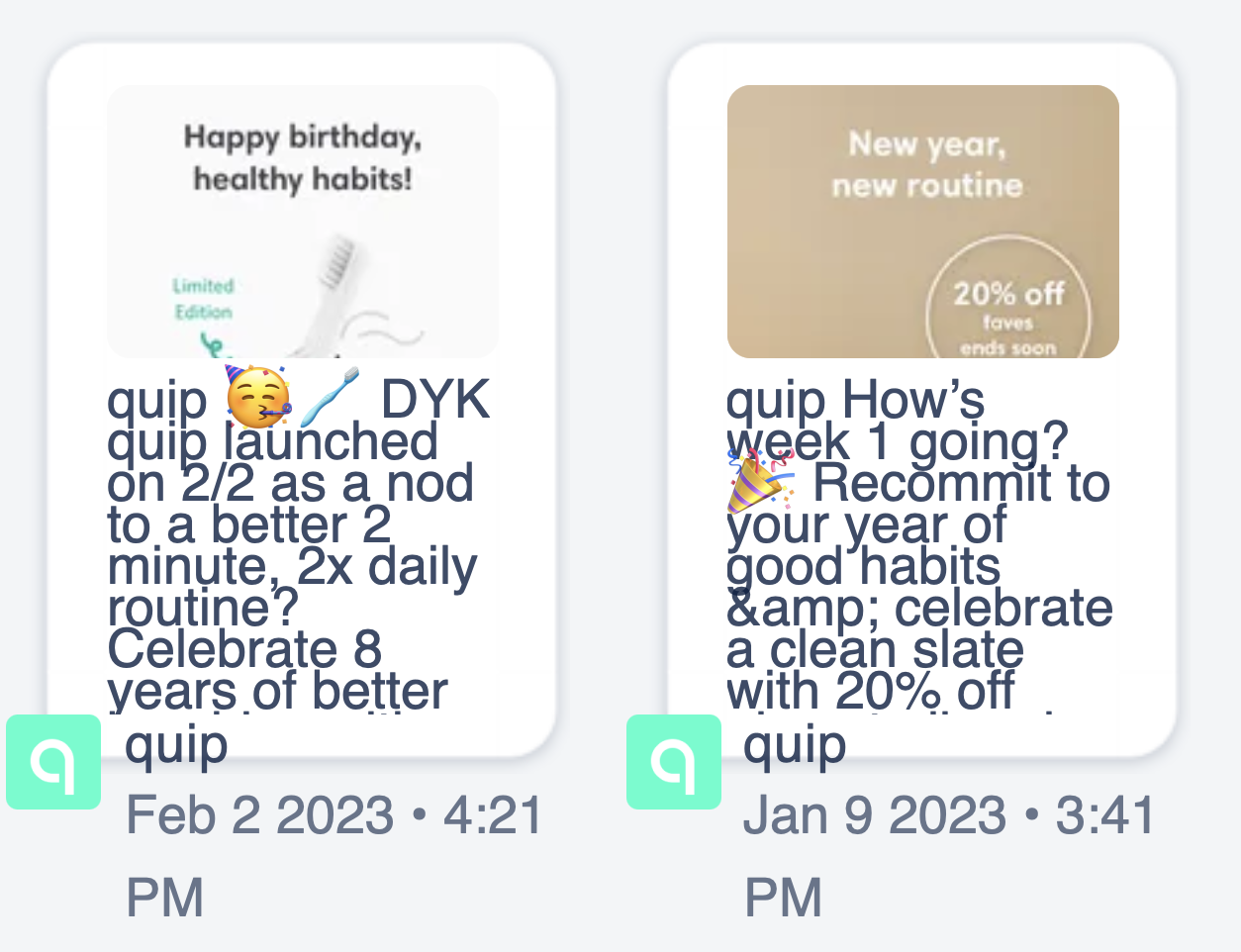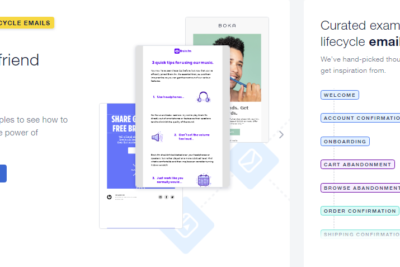Email might be the most universal digital marketing channel, but text messaging via SMS and MMS is gaining ground. Instead of replacing email, however, text messaging can work with your email program to meet your customers wherever they are on their journeys with your brand.
Text messaging reach and economic impact
Are people actually buying from text messages? Yes, according to stats from Zippia:
- U.S. revenue generated via mobile reached $431 billion in 2022.
- 53.9% of all annual retail ecommerce sales in the U.S. come from mobile commerce.
These numbers don’t happen by accident. Successful text marketing takes strategic planning and technical prowess. It’s also important to know the difference between SMS and MMS messaging.
Use this guide to learn the ins and outs of SMS vs MMS messaging and how you can use each one to build reach, engagement, and revenue.
SMS: The standard for text messaging
SMS (Short Message Service) has been around since the 1980s and is the most reliable and prevalent form of text messaging. Almost every mobile phone can send and receive texts, either through a native app on the phone or an over-the-top (OTT) internet-based messaging service like iMessage, WhatsApp, or WeChat.
In most countries, commercial senders must get permission before sending messages, including transactional messages or alerts.
In the United States, the Federal Communications Commission regulates text messaging through the Telephone Consumer Protection Act of 1991 because texting uses bandwidth, a limited public commodity. Penalties for “robotexting,” scam texting, and texting without permission, include fines and blocked network access.
MS and MMS have some advantages over email: They’re faster to compose and send and have nearly a 100 percent open rate (although there’s more to that stat). However, they can also have data quality and deliverability problems, so marketers need to pay attention to these mechanics as well.
What is SMS
SMS is like plain-text email. It is text-only—no images, videos, or sound files. Each message is limited to 160 characters and is sent to a recipient’s mobile phone number. SMS messages are sent over cellular networks so they don’t require internet access.
When creating SMS messages, remember that how recipients configure their phones for messaging will affect how they receive and view your messages. Not everyone allows notifications via banners, sounds, or badges on their lock screens (the first screen that appears on a locked smartphone).
Advantages of SMS
Besides having near-universal acceptance, SMS messages can be quick to compose, fast to send, and more appropriate than email for many uses.
Alerts, for example, can be more effective via SMS because they can appear on the lock screen. Recipients don’t have to open their message inboxes to see them. See the next section for some popular SMS uses in an ecommerce program.
SMS messages can also be less expensive than email to send. As with email, network traffic can vary, but texts usually get delivered immediately.
Deliverability can be both a pro and a con when using SMS. On the plus side, SMS delivery is usually reliable. Most carriers have a 90 percent or better delivery rate. Messages can be delayed when recipients are in no-coverage areas but often show up when phones connect with service again.
SMS also can be a fertile testing ground. These tests can deliver valuable insights and data:
- What types of messages and offers customers respond to
- Optimal frequency (Read more on frequency and timing in When is the Best Time to Send SMS Marketing Messages?)
- Whether personalization affects responses
- How to combine email and SMS for maximum effect
Use cases for SMS
In ecommerce, SMS can operate on its own or with email in an omnichannel messaging matrix.
Here are some primary use cases:
Promotional
- Invitations to opt in to email or follow social channels
- Flash sales
- Coupon or offer deadlines
- VIP-only offers
- New collection or product announcements
- Event invitations
Transactional
- Purchase and shipping confirmations and updates
- Delivery notifications
- Review requests
- Abandoned cart notifications
Customer service
- Follow-up on complaints or inquiries
- Notification of returns received or refunds processed
- Payment failures
- Account expirations or renewals
Limitations of SMS
SMS has some drawbacks to consider in your messaging strategy. The main limitations include:
-
- Size limitation: An SMS message is limited to 160 characters, including spaces. If you go over 160, carriers will split your message into multiple parts. Most carriers chain these messages together, but you could lose impact if your offer or key info shows up in message three.
- Open rate is not exact: As with email, the open rate isn’t a reliable success measure. Most mobile devices open messages automatically, so an open doesn’t always equal an eyeball.
- Easy to dismiss: Most smartphones let users clear lock-screen notifications with a simple swipe. Make your first 20 characters compelling enough to attract an open.
- Can become intrusive: Customers like texts, but their tolerance fades fast if you text them like an obsessed ex.
- Spam flagging: Recipients can easily mark texts as spam or junk, and your deliverability can suffer. (Sound familiar?)
- Identity crisis: Make your brand name prominent. Emails sent from a short code or a phone number not in your recipient’s contact list can look like spam or bot messages.
MMS: The multimedia alternative
MMS vs SMS? These two messaging protocols are often pitched as either-or, but smart marketers know each has a place in digital marketing. MMS requires even more thought and care than SMS, but when used strategically, it can enhance your text message strategy.
What is MMS and how does it work?
MMS (Multimedia Message Service) is newer than SMS and is like HTML email because you can use image, video, and sound files. They can be more engaging than SMS, but they also take more time to create and send.
Advantages of MMS
In a sea of plain type, your MMS message with a product image or animation will stand out when your customer opens it. MMS messages have a 1,600-character limit, giving you more space to tell your story. Customers often find these features more compelling and trustworthy.
Today’s smartphones are more MMS-friendly, so your decision to send an MMS campaign can be easier to make. The growth of smartphone usage means more customers will see your message enhancements the way you intended them.
In the U.S., competition among the top carriers has made unlimited texting a feature instead of an option. So per-message costs are less of a deterrent.
Limitations of MMS
Your SMS vs MMS debate should take these factors into account:
- Expensive to send: Many carriers charge more to send MMS messages because the added files consume more data.
- Delivery time lag: MMS messages need extra steps from sender to recipient, which can take longer and have more failure points
- Device compatibility: Some phones aren’t set up to receive MMS. Having a fallback SMS message is a must.
- Longer development time: Setting up an MMS message is more complex and can take more time to create and test.
- Not suitable for all message types: MMS can be overkill for some messages, such as alerts
Use cases for MMS
You could, in theory, send an MMS message every time, but because they consume more time and resources, you’re better off saving them for the times when you need maximum impact, like the following scenarios::
- Welcome/onboarding
- Introducing new collections
- Back-in-stock notices with personalized product images
- VIP messages sent to select audiences
- Event footage
- Personalized video messages
Create a text messaging strategy with SMS and MMS
Text messaging is like email: It works better when you come up with a strategy for it before you start sending messages. Use these three tips to create a plan that will guide your decision-making on everything from message content to frequency to the classic SMS vs MMS debate.
Know why you’re texting
Yes, texting is popular, and people like it within reason. But don’t send a text just because you can. Have a goal for each message. That will guide your copywriting, offer, and format.
Know whom you’re texting
Segmentation and targeting are just as important in texting, especially when you’re deciding whether to use SMS or MMS. We cover this in more detail in 12 Tools for SMS Marketing You Should Know About.
Pair up with email
Send a text to support a major email campaign. Use email campaigns to drive opt-ins to mobile. (Need ideas? See our SMS Email Promotion example list for ideas from top brands like Lee, DSW, and J. Crew.)
For extra synchronicity, plan your email and SMS vs MMS campaigns in the same calendar.
3 brands crushing it with SMS/MMS
Brand to watch: Quip
Study subscription brand Quip for an example of deep coordination between email and text campaigns, high engagement via MMS, a good mix of promo, personalized and triggered messages, and unified brand voice across channels.

Timing is everything
Beis coordinates its promotional email and SMS campaigns so each channel amplifies the other. It’s a great tactic if cost limits your MMS use. The email delivers the image, and strong SMS copy piques interest.

Opt-in incentive or not?
Those little incentives might look tempting, but do they drive more SMS opt-ins or whittle down your already-thin margin? Threads 4 Thought combines FOMO and VIP status to attract new texters. (It also has a discount-driven promo. Keep reading to find out what it is.)

Ready to create or optimize your text messaging program?
Browse MailCharts email campaigns by industry category or brands to start planning or get inspiration for your next campaign. Get started with a free account!



